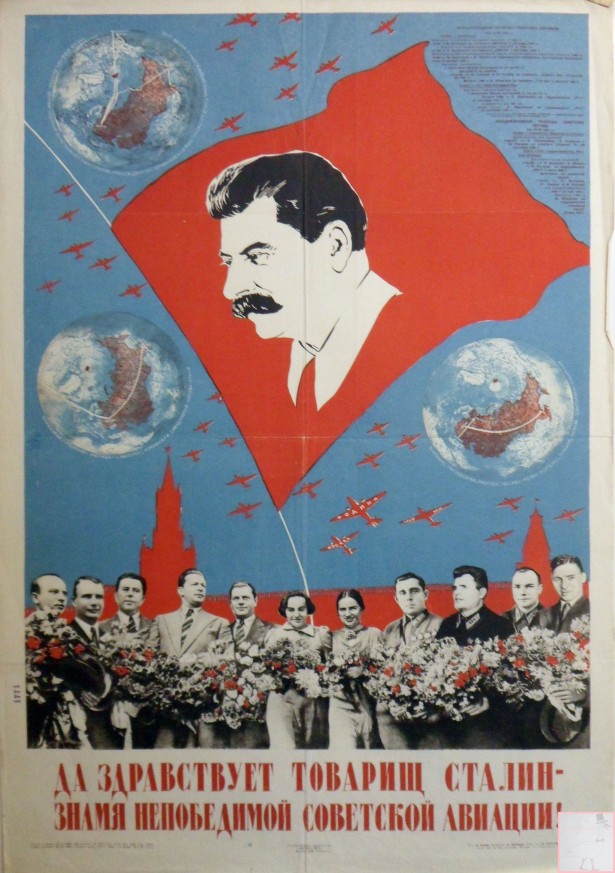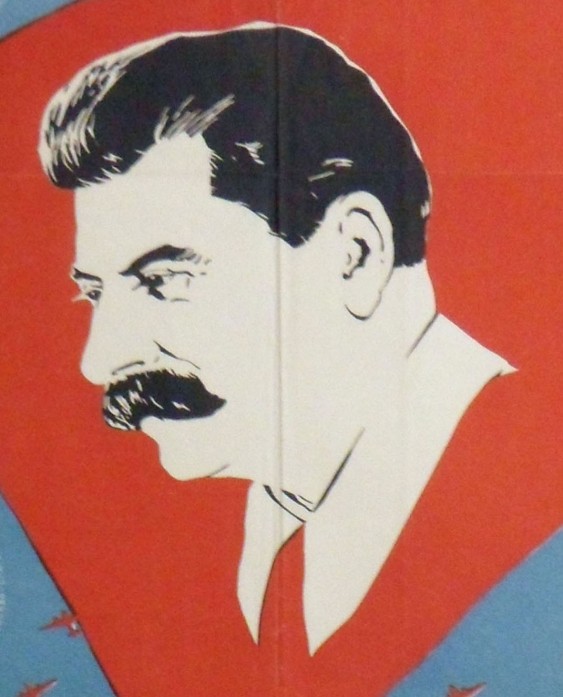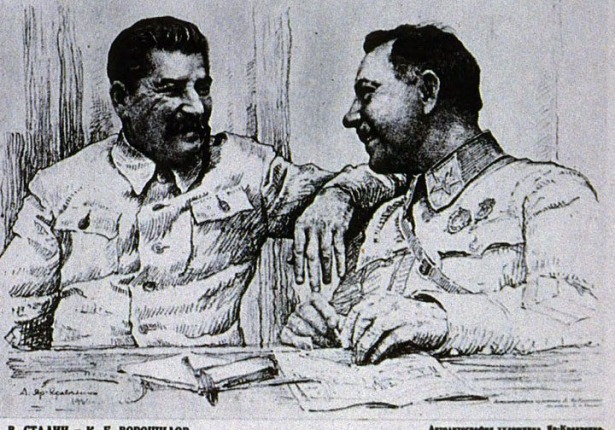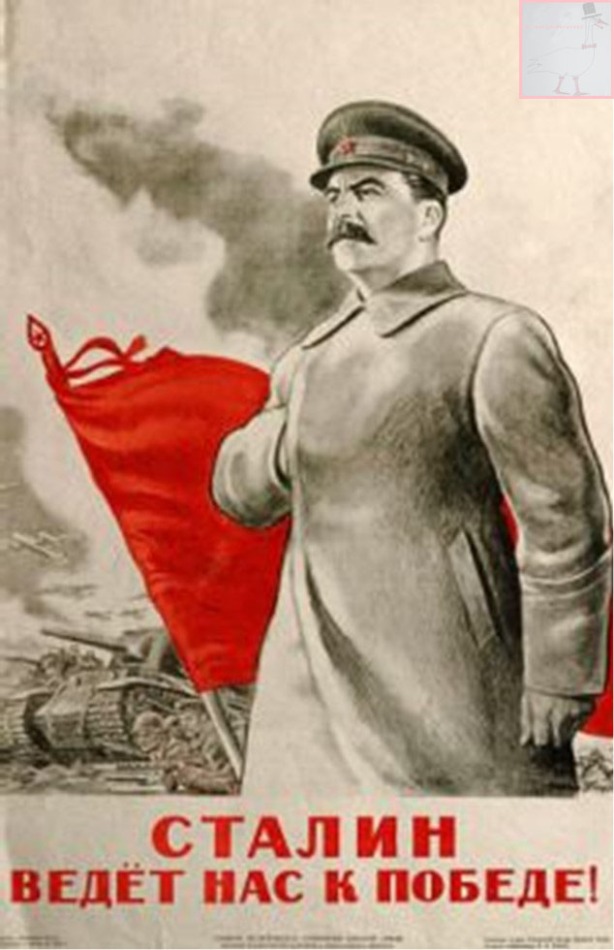
Iraklii Toidze (Тоидзе, И.), Stalin will lead us to victory! (Сталин ведёт нас к победе!), 1943
Stalin poster of the week is a weekly excursion into the fascinating world of propaganda posters of Iosif Stalin, leader of the USSR from 1929 until his death in 1953.
Here, Anita Pisch will showcase some of the most interesting Stalin posters, based on extensive research in the archives of the Russian State Library, and analyse what makes these images such successful propaganda.
Anita’s new, fully illustrated book, The personality cult of Stalin in Soviet posters, 1929 -1953, published by ANU Press, is available for free download here, and can also be purchased in hard copy from ANU Press.
The city of Stalingrad, which had been renamed in Stalin’s honour after the Civil War, held a particular symbolic value in the Soviet regime. During the Great Patriotic War, Stalin was determined that he could not let the city named for him fall to the Germans, and in 1942 Stalingrad became the scene of a fierce and bloody battle.
On 6 November the defenders of Stalingrad took an oath to Stalin:
Before our battle standards and the whole Soviet country, we swear that we will not besmirch the glory of Russian arms and will fight to the last. Under your leadership, our fathers won the Battle of Tsaritsyn, and under your leadership we will now win the great Battle of Stalingrad.
Iraklii Toidze’s ‘Stalin will lead us to victory!’ was released on 6 January 1943, a few weeks before the Soviet victory in Stalingrad, but already shows an increasing confidence that the tide of the war was turning in favour of the Soviets.

Determined troops and the latest weaponry surge into battle, forging ahead towards Soviet victory
A giant Stalin strides across the battlefield at the head of his troops, equipped with the most modern weaponry, and supported by heavy armoury and the technological excellence of Soviet aviation.
Stalin’s face is determined, befitting his appellation as the ‘man of steel’. The steel-grey tones of the poster are broken up by the vivid red of the banner, which is picked up by the small red star on Stalin’s general’s cap.
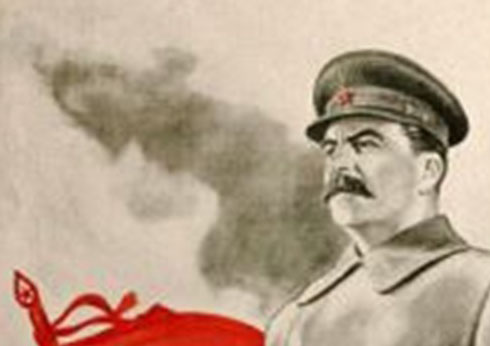
Phallic symbols accompany the great warrior into battle
The use of red diagonals gives the poster a sense of inexorable movement forward. Stalin looks unstoppable, his aura of power increased by the vaguely phallic-shaped cloud of smoke on his right shoulder — even the forces of nature are harnessed by the magnetic power of Stalin.
On 2 February 1943, the Germans troops at Stalingrad surrendered. Although the war had not been won, there was finally some good news to spread to the populace.
Anita Pisch‘s new book, The personality cult of Stalin in Soviet posters, 1929 – 1953, is now available for free download through ANU Press open access, or to purchase in hard copy for $83. This lavishly illustrated book, featuring reproductions of over 130 posters, examines the way in which Stalin’s image in posters, symbolising the Bolshevik Party, the USSR state, and Bolshevik values and ideology, was used to create legitimacy for the Bolshevik government, to mobilise the population to make great sacrifices in order to industrialise and collectivise rapidly, and later to win the war, and to foster the development of a new type of Soviet person in a new utopian world.
Visit Anita Pisch’s website at www.anitapisch.com




